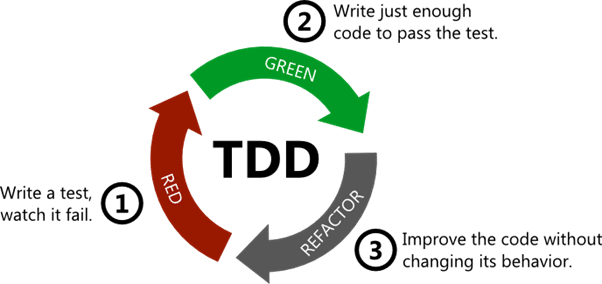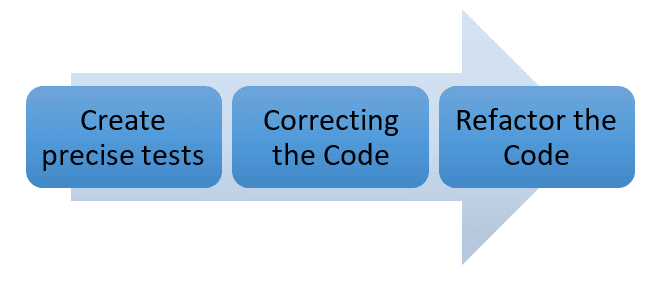“Sometimes, you must fail before you can succeed,” is one of the popular sayings by Sampson Davis. There’s no better example of that than Test Driven Development (TDD). TDD is one such practice that is now recognized as an effective approach that drives positive result.
IMAGE: UNSPLASH
Let us walk through all about Test Driven Development basics you need to know. Here are the topics you’ll read in this article:
- What is Test Driven Development (TDD)
- Three phases of Test Driven Development
- Benefits of Test Driven Development
- Five Steps of Tests Driven Development
- Framework of Test Driven Development
- Test Driven Development vs Behaviour Driven Development
- Conclusion
What Is Test Driven Development (TDD)?
What is TDD in general? Test Driven Development (TDD) is a software development practice that focuses on developing unit test cases before developing the actual code for the test. It is a constant approach that combines the process programming the creation of unit tests, and refactoring the code respectively.
In simple terms, Test-driven development (TDD) is a test performed before the software is fully developed using the software development process which are relied on software requirements, and repeatedly testing the software by tracking all software development against all test cases performed earlier.
Three Phases Of Test Driven Development
1. Create Precise Tests
This is the first phase where the developers need to create precise unit tests to verify the functionality of specific features. They must ensure that all the tests are observed properly so that it can execute for the further processes.
In most cases, there are chances of test failure. This will in turn come out as a meaningful failure as developers’ conducts many test based on their assumption on how the features will react. On the basis of the features behaviour and response further steps can be taken.
2. Correcting The Code
This is the second phase where once a test fails, developers need to make the minimal changes required to correct the code so that it can run successfully when re-executed.
3. Refactor The Code
This is the third and the final phase in TDD where once the test runs successfully, check for redundancy or any possible code optimizations to enhance overall performance. Ensure that refactoring does not affect the external behaviour of the program, which can also affect the later responses and results.
The image below make sus understand about the different phases in high performance Test Driven Development (TDD).
As discussed earlier, each phase passes through different levels of tests, so an appropriate decision can be executed to make the software more effective and also have a smooth flow without any drawbacks at the time of final results or according to our clients’ requirements.
Benefits Of Test Driven Development (TDD)
- The primary benefit of the TDD approach is that it has fewer bugs and errors. When it has fewer bugs and error, it would take less time and efforts.
- Better requirements understanding. While conducting such tests, the tester will have an overall idea about the requirements and the wants of the user.
- TDD yields high quality code by having a proper records of the efficiency and feedbacks.
- The addition and testing of new functionalities become more easier in the latter stages of development
- Enhance the productivity of the developer and leads to the development of a codebase that is easy and flexible to maintain and use.
Five Steps Of Test Driven Development (TDD)
- Firstly read, then understand the process and the feature or bug request.
- You can covert by writing a unit all your requirements. The unit test will run and fail as no code is implemented yet because of the hot reloading set up.
- For fulfilling all the requirements, writing and implementing the code is necessary. Run all tests and they should pass each and every test, if not repeat this step till it clears the test.
- Refactoring is the process of cleaning the code.
- Rinse, lather and repeat.
This workflow of the Test Driven Development Approach is called as Red-Green-Refactoring, which reflects the status of the test within the cycle.
- The red phase in the workflow indicates that the code is not working.
- The Green Phase in the workflow indicates that everything is working according to the requirements, but not necessary in the most optimal way.
- The Blue Phase in the workflow indicates that the tester is refactoring the code, but is confident in their code is covered with tests that gives the tester confidence to change and improve the code.
Frameworks For Effective Test Driven Development (TDD)
There are multiple frameworks that support Test Driven Development because of its unique programming languages. Listed below are few popular one that are used on a frequent basis:
- CsUnit and NUnit: Both are used for.NET projects as it is an open source unit testing frameworks.
- PyUnit and DocTest: In Python, it is one of the most popular unit testing framework.
- Junit: Javas’ unit testing tool
- TestNG: Another popular Java testing framework. The limitation of Junit can be overcome using this framework
- Pytest: It is also an open source unit testing framework that is easy to learn tool that makes it easy and simpler to conduct unit tests
- NodeJS:Jest: With a focus on simplicity, it is a JavaScript Testing Framework
Test Driven Development vs Behaviour Driven Development
Here is a quick difference between TDD and what is BDD:
CRITERIA |
TDD
|
BDD
|
| Team members involved | Developers | Product owners, business analysts, testers, developers |
| Implementation Level | Low-level | High-level |
| Development Stage | Coding, refactoring | Feature discussion, creating scenarios, testing, coding, refactoring |
| Key Stage | Test Writing | Discussing and creating scenarios |
| Language | Any programming language | Gherkin syntax for user stories and scenarios; any programming language for tests and code; an additional framework to connect Gherkin specification and automated tests implementation |
| Focus On | Defining required functionality with tests | Correspondence between implemented feature and expected behaviour. |
| Input documentation | Requirements documentation | Acceptance criteria, requirements documentation |
Conclusion
Most of the developers does not write there for the test using test-driven development, but they should implement it. Test-driven development design better code that is more risk-tolerant. Hopefully you understand the ideology of TDD approach from this article and incorporate it into your upcoming software development practice.
IMAGE: UNSPLASH
If you are interested in even more technology-related articles and information from us here at Bit Rebels, then we have a lot to choose from.




COMMENTS